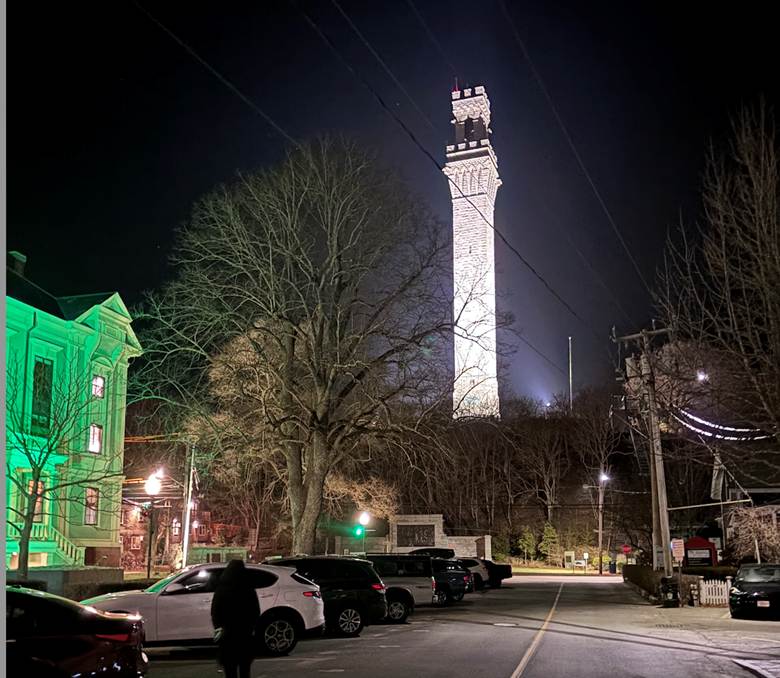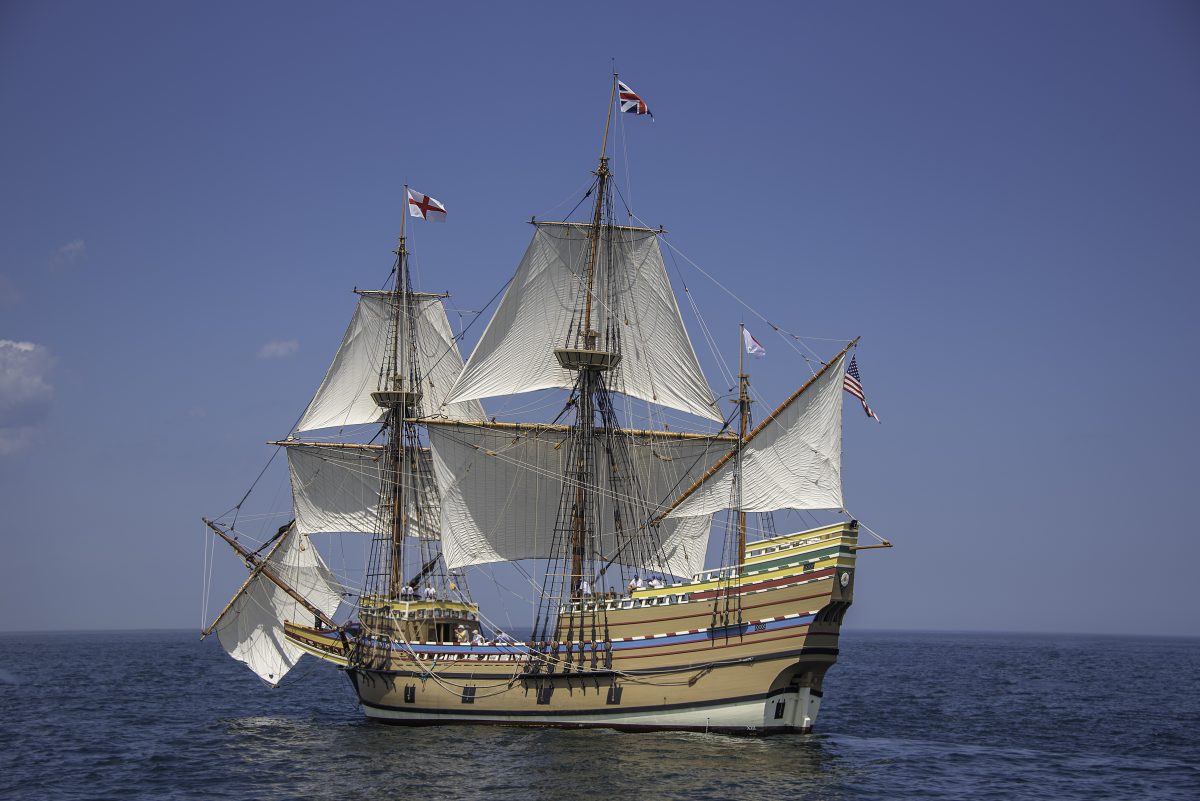In January 1621, 14-year-old Francis Billington – who arrived on the Mayflower the year before – scrambled up a tree atop Fort Hill in Plimoth, known today as Burial Hill, and gazed to the west. He claimed to have seen “a great sea.” The sea, it turned out, was a 269-acre pond, known ever since as Billington Sea.
This story is recounted in Nathaniel Philbrick’s extraordinary book, “Mayflower: A Story of Courage, Community, and War,” which I first read about 20years ago, long before I had any inkling I would someday live in Plymouth. Now that I’m getting to know the town, I re-read it with enthusiasm. Many names and places which were once just words on a page are now familiar. A few weeks before I read about Francis Billington, for example, I read a story on the Independent site about bird flu at Billington Sea and thought it a curious name for a pond. I’d recently wandered around Burial Hill, too.
Saquish and the Gurnet, about which I wrote for the Independent also figure in the Pilgrim story, two place names that didn’t register when I first read “Mayflower,” but were now places I could see from downtown. After the Pilgrims’ first encounter (a skirmish) with Native Americans at present day Eastham – hence First Encounter Beach in that town – they decided to move on from the Cape. A group set sail in a shallop toward modern day Plymouth and nearly met their maker close to the beach between the Gurnet and Saquish Head. They rowed around Saquish at nightfall and took shelter on what they discovered in the next morning’s light was an island.

The first man to set foot on the island the previous night was the Mayflower’s pilot, John Clark. The island has borne his name ever since. Leaving aside the myth that Plymouth Rock is where the Pilgrims first set foot in the New World – they first made landfall in Provincetown, and the rock they likely stepped on when they reached here is not the one on display. In fact, the first rock they stepped on in Plymouth is not the one under the harbor portico. That honor goes to Clark’s Island.
Even names that once seemed random to me, the town of Carver, for example, I now realize are a legacy of those days. John Carver was a signer of the Mayflower Compact and first governor of the colony. James Chilton, a Mayflower passenger who died en route to the New World, lent his name to the part of Plymouth called Chiltonville. From Provincetown to Plymouth, there are countless streets, inns, and restaurants named for the colony’s long-serving governor, William Bradford, and a few places named for the colony’s diminutive but hot-headed, and occasionally brutish, military adviser Myles (or Miles) Standish. The state park is “Myles Standish,” but in many places, including Philbrick’s book, he’s “Miles Standish,” and Philbrick is no slouch as a historian. The American Ancestors website lists him as Miles; The Mayflower Society has him as Myles. Surely, I thought, it must be one or the other, but legal documents from the time variably give his name as Miles or Myles. Such variations were not unusual for the time. At least everyone agrees on Standish – well, least on the spelling of his name. Last year, after much debate, Boston University removed his name from a dormitory because of his record of brutality which included ambushing members of the Massachusett tribe at a “peace dinner” near modern day Weymouth and displaying the severed head of one on a pole for months thereafter. For the record, the dorm was called Myles Standish Hall, with a “y.”
I’m going to go out on a limb here and guess that the Winslowe’s View neighborhood in the Pinehills, is named for Edward Winslow, a Mayflower passenger and assistant governor of the colony, and/or Josiah Winslow, Edward’s Plymouth-born, Harvard-educated son who served as governor from 1673-1680. But with the “e” on Winslowe’s, I got to thinking we might have a Miles versus Myles situation here. Plymouth Colony records from October 5, 1640, note a memorandum of a land sale from a Josias Winslowe to a John Barnes. Could this have been the future governor, Josiah Winslow? Josiah, identified in some historical records as Josias, was born sometime between 1623 and 1629, which would have made him an unusually young landowner in 1640, between 11 and 17 years old, but it’s possible, especially if he was closer to 17.
To get to the bottom of this, I e-mailed Jim Baker, unofficial town historian, former senior historian at Plimoth Patuxet Museums and author of “A Guide to Historic Plymouth.” Jim assured me that Josiah and Josias are indeed the same.
“The ‘e’ the Pinehills added to the Winslow name is just a bit of ‘Ye Olde’ twee,” he wrote, “not an esoteric historical association by the Green Company [the Pinehills developer].” Mystery solved. Neighborhood and street names in the Pinehills lean heavily towards the insufferably precious – Shutter Latch, Bentgrass Mist, and Butten Mews, a fitting name for an adult film actress if you ask me, are atop the leader board – so I suppose Winslowe’s View can be excused. The others cannot.
Another name familiar from traveling around Plymouth is Speedwell, as in the tavern on Main Street, and the coffee roaster on South Meadow Road. If you paid close attention in eighth grade history class, which I apparently did not, you may know that the Speedwell was a leaky vessel that was supposed to accompany the Mayflower to the New World after ferrying the Pilgrims from their refuge in Leiden, Holland, back to England. Two-thirds the size of the Mayflower, it never made it more than a few hundred miles beyond the southwest coast of England before being forced to turn back. Some suspected, then and now, that the Speedwell was purposely overfitted with a mast too large for the ship, ensuring it would never get very far. Again, Speedwell was another name with no historical association for me until I re-read Philbrick’s book. Now I know, and so do you.
In my first few months here, I’ve explored Plymouth by foot and by car, but I’ve learned that with the right book you can also explore it from the comfort of a living room. Best to do all three and then commandeer a boat.
Peter Zheutlin – a freelance journalist who has written frequently for The Boston Globe, The Christian Science Monitor, and many other publications – brings the perspective of a Plymouth newcomer to the Independent. He is the author or co-author of nine books, including “The Dog Went Over the Mountain: Travels with Albie, An American Journey,” winner of the Lowell Thomas Travel Writing Award. Zheutlin can be reached at pzheutlin@gmail.com.

